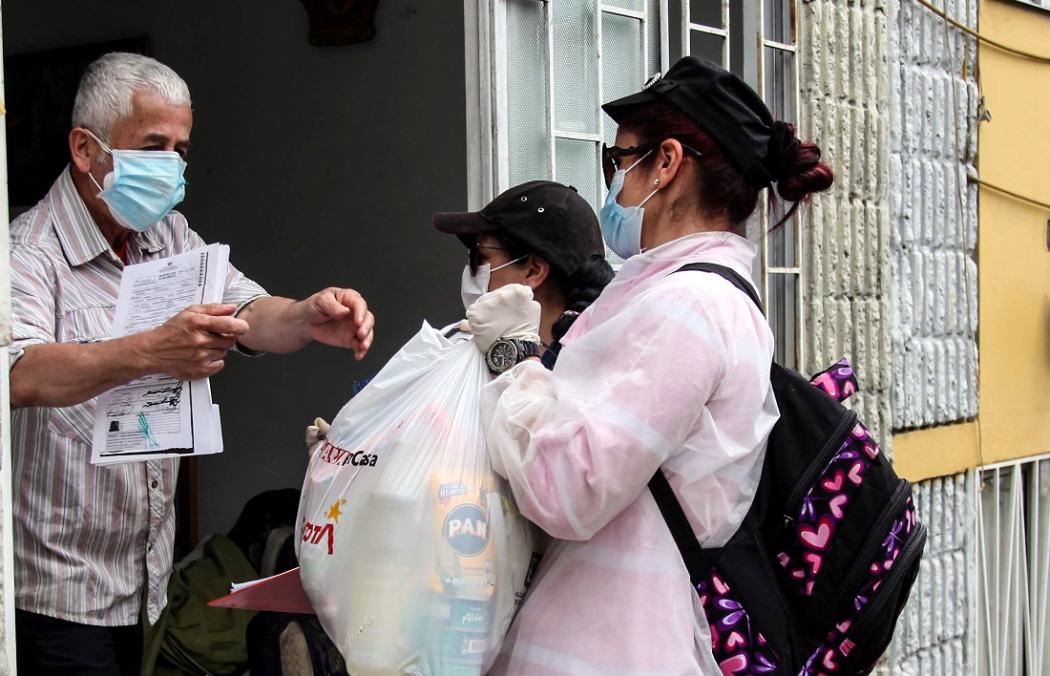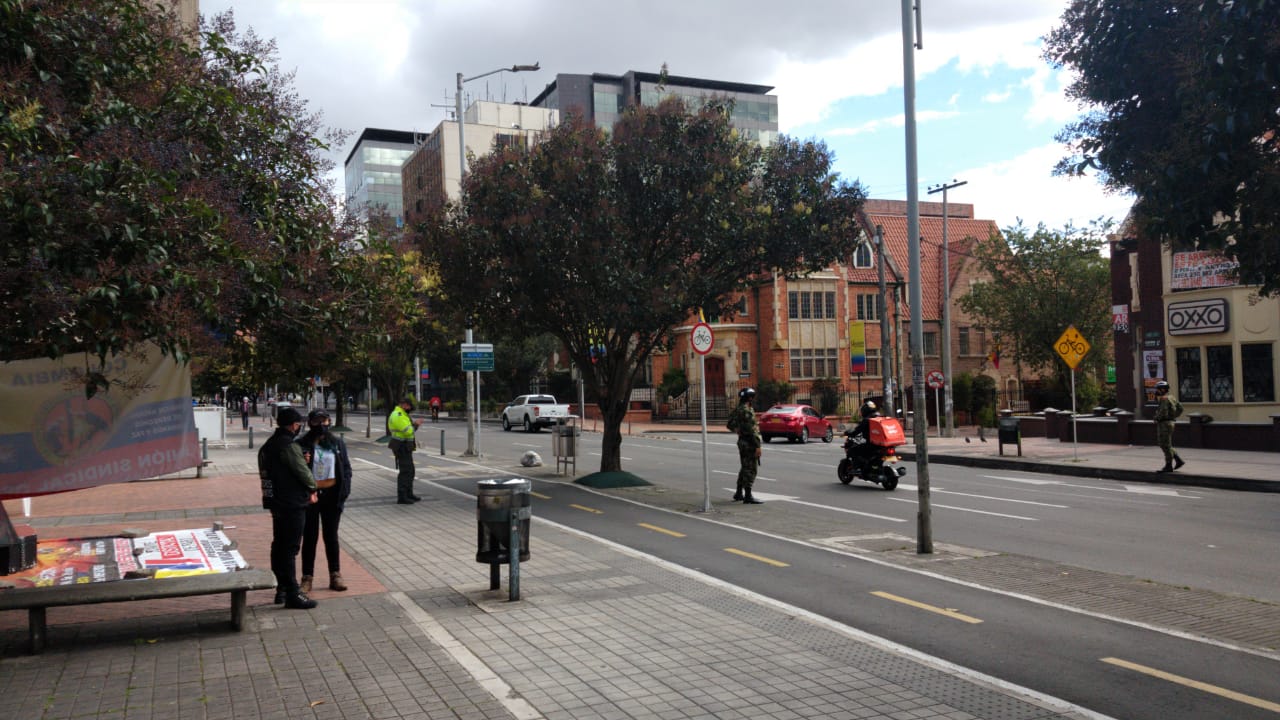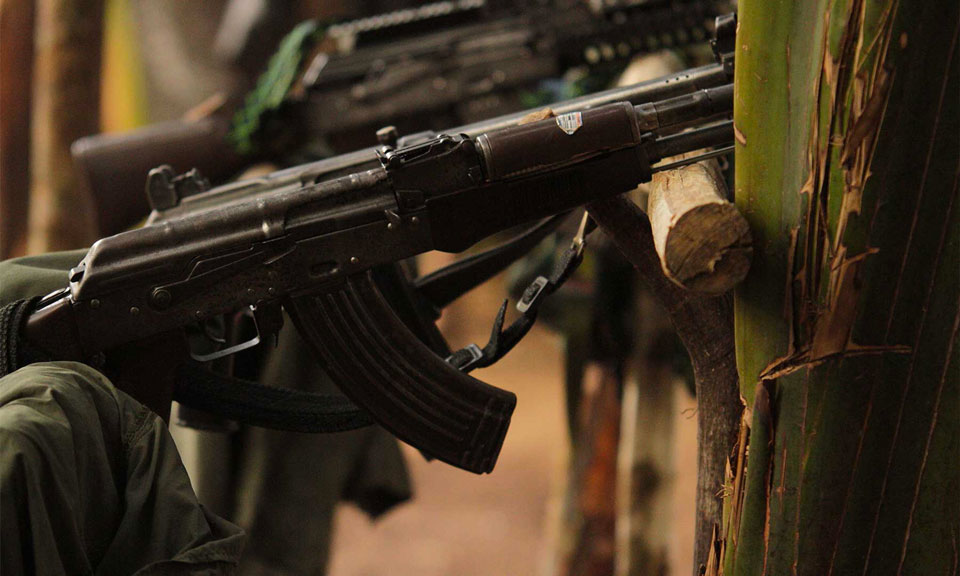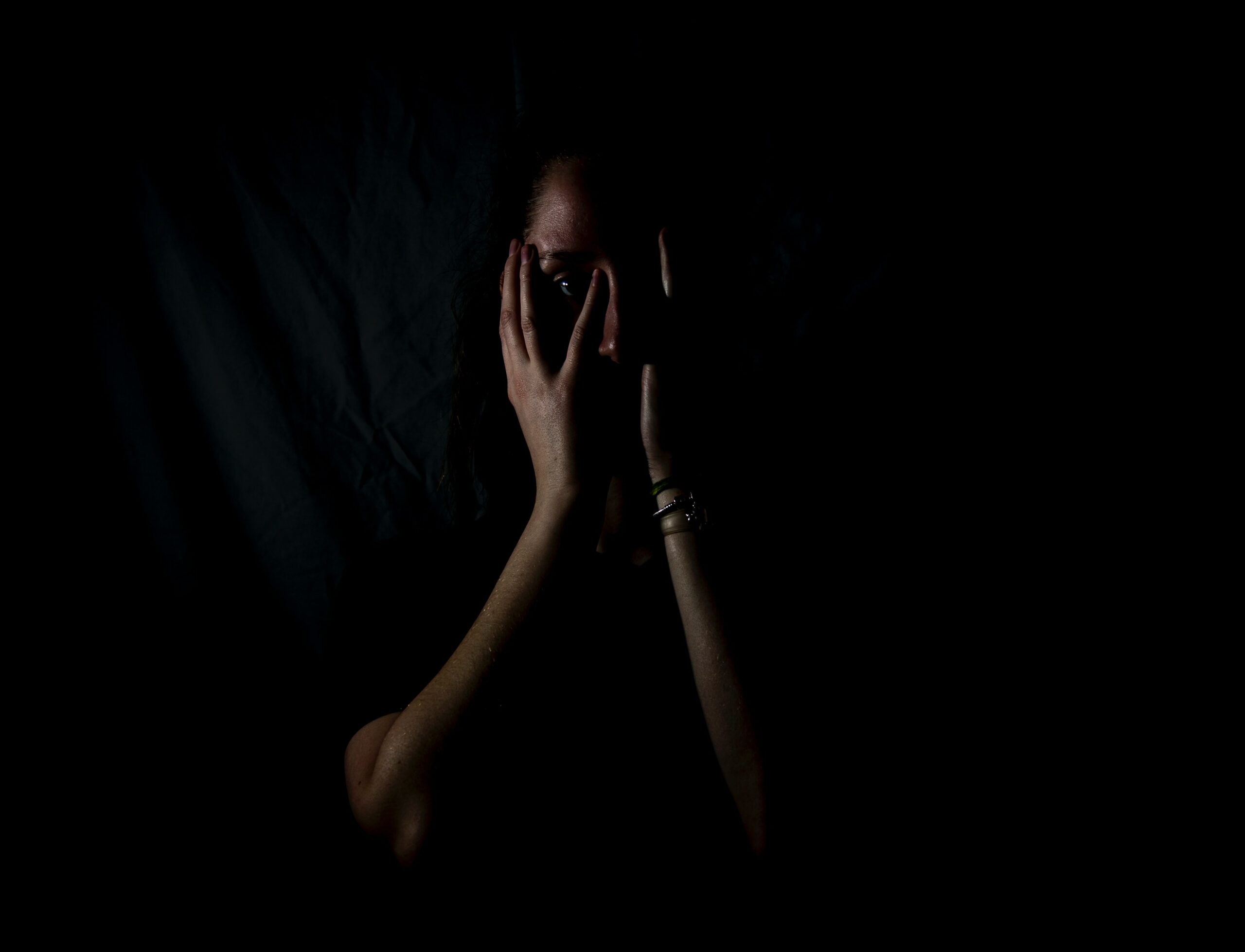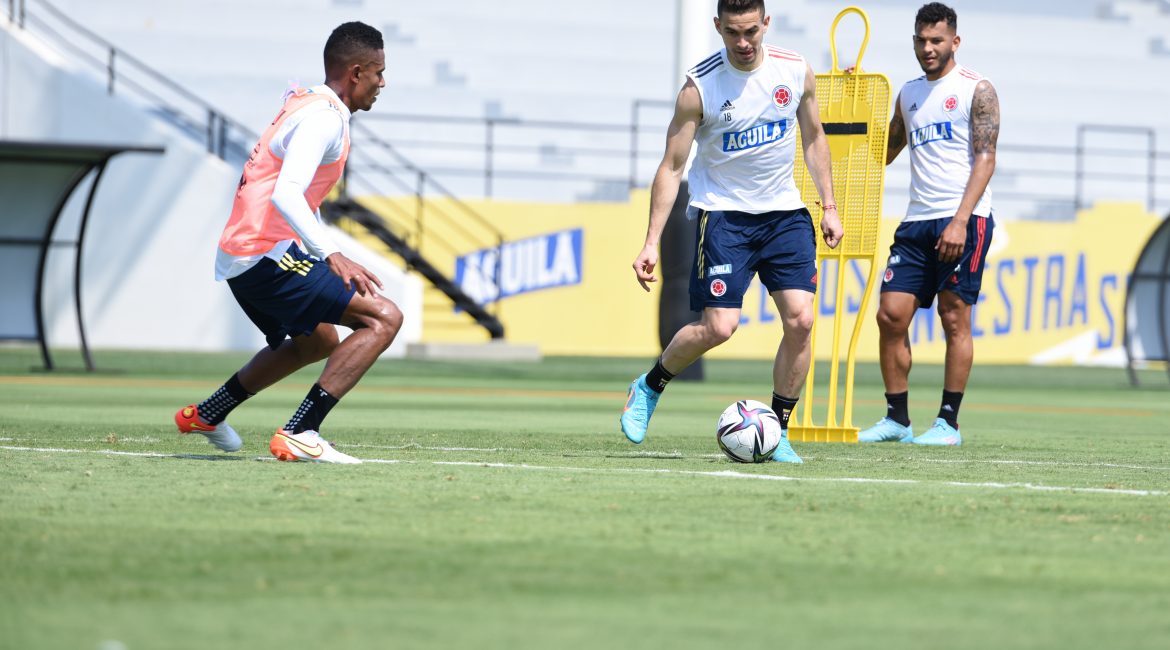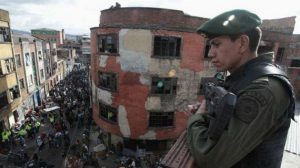
A soldier looks on from a rooftop as the police go about their raid in Bogotá’s Bronx.
Evidence of torture, execution and enslavement as thousands, including 200 children, are removed from the lawless Bronx just blocks from the Presidential Palace
Commentators raise concerns about provisions for those that have been moved on
At dawn on Saturday May 28, more than 2,500 heavily-armed riot police swept through the infamous Bronx neighbourhood in Bogotá’s historic centre, in an attempt to purge the troubled, drug-ravaged community of its long-ignored gang culture.
As the officers made their way through the labyrinth of tunnels and alleyways that connect the various dilapidated buildings, the extent of the horrors that had been hidden in the neighbourhood began to emerge.
According to Mayor Enrique Peñalosa, the man behind the raids, police found a drug laboratory and three crack dens, along with a 100-metre tunnel thought to have been instrumental in the traffic of narcotics, weapons and kidnapping victims into and out of the area.
Police arrested 11 people, including two notorious gang leaders known as ‘Teo’ and ‘El Flaco’. However, some report that leaked information on the raid allowed many of the gang heavyweights to walk away unscathed.
Police also found evidence of torture, and suspect that some residents of the area were being held against their will and even enslaved. Bogotá’s Secretary of Security, Daniel Mejía, asserts that evidence of drug-induced satanic worship was found deep in the heart of the Bronx.
A courtyard, whose walls were riddled with bullet holes, is said to have been used to execute enemies of the drug gangs with gunfire. Vats of acid found nearby could then have been used to dissolve the corpses.
All about the children
Mayor Peñalosa said, “We won’t continue to tolerate an independent republic of criminals, where children are exploited, in any area of Bogotá.”
Claudia Quintero, head of the Anne Frank Corporation – a national charity that seeks to protect victims of violence in Colombia – told Reuters: “We have heard testimonies from children that they are forced to take drugs and are then exploited sexually. Several parents had to pay an extortion fee to the gangs to get their girls out of the brothels.”
Authorities claim that nearly 1,600 people were taken away and have been offered rehabilitation and support. Some 200 children living in squalid conditions were rescued from the area, 136 of whom have now been taken into care by the Colombian Institute of Family Welfare (ICBF).
Quintero also voiced concern that the ICBF is not fully equipped to deal with children who have been victims of narcotrafficking. “The children are being subjected to incarceration, and there isn’t any real reparation for these victims, nor is there a strategic plan of prevention to stop it happening again.”
Social repercussions
With at least 5,000 people living on the street throughout the city, social commentators like anthropologist Ingrid Morris Rincón, who wrote a book about similar raids in the city’s Cartucho district, are concerned about the capacity of existing systems to support an influx of former Bronx dwellers.
In an interview with Arcadia magazine, she points out that, in 1998, during his first term as mayor, Peñalosa ordered similar raids in the Cartucho district. Those involved in the drugs trade were driven from that neighbourhood, but simply moved their business to the Bronx. Similarly, many of those evicted from the Bronx have simply been displaced a few blocks over to Plaza España and other surrounding neighbourhoods.
She said: “The intervention in the Bronx can’t just be an urban renewal plan, it has to be accompanied by a social policy from the state. It wasn’t only mafias and drug users who lived in the Bronx; there were also families, women and children. What is the social policy to provide care for those people?”
By John Bartlett

